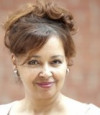Igor Lesko

Igor Lesko is the Interim Co-Executive Director for Open Education Global.
Igor Lesko, originally from Slovakia, has been living in South Africa since 2003. Following his undergraduate studies in European Studies, Igor spent one year at Bard College (NY; USA) in an international exchange programme, made possible through the Open Society Foundations (OSF). He earned 2 M.A. degrees, one in Social Development (2005) plus another in Development Management (2007) from the University of the Western Cape (South Africa) & Ruhr University (Germany), respectively. Igor is also a PhD candidate at Open Universiteit Nederland, under the Global OER Graduate Network (GO-GN). His area of research focuses on the Impact of International Organizations, policy networks and entrepreneurs on Governmental OER policies.
Igor has been working in the Open Education field for 15 years, with 14+ years at Open Education Global. He has worked on numerous education projects (national and international) as a researcher, evaluator and coordinator. His main interests include Open Educational Resources (OER), Open Education and Open Policies, with a growing interest in applying skills in the field of development.
Electronic Portfolios: Showcasing Student Growth
Alex Lancia, International Community School of Addis Ababa, Ethiopia
“A portfolio tells a story. It is a story of knowing. Knowing about things … Knowing oneself...Knowing an audience...Portfolios are students' own stories of what they know, why they believe they know it, and why others should be of the same opinion. A portfolio is backed by fact … Students prove what they know with samples of their work."
(Paulson, Paulson, & Meyer, p.2 as cited in Buzzetto-More, 2010)
Why electronic portfolios? Traditionally, the way to report on a student's progress is through a paper-based report. This report is usually a mix of either letters or numbers and perhaps a teacher comment to indicate the student's performance throughout his or her academic year. The purpose of these reports is often to inform parents of their child's performance, to provide insight for future teachers of their incoming student's academic proficiency, and as data points for schools in assessing instructional effectiveness.When analyzed critically, though, a student's report is often as generic as the paper it is written on. However, as educators, we now have the possibility of using technology to move beyond paper-based reporting to create a rich and dynamic digital profile of student progress and performance that evidences their growth and more clearly articulates their skills and competencies.
A popular saying is that a picture is worth a thousand words. Technology in the form of smart-phones, tablets, laptops, audio recorders, and even basic camerasallows for a richer reporting experience by providing students with digital evidence of their learning through audio, video, and images. In this context an electronic portfolio (ePortfolio) serves as a digital vessel, a means of enabling students to collect their artifacts in multi-modal format. All personal growth is developmental, proceeding in stages, and as such reporting should not focus on the final outcome or product but on the learning journey. At a most basic level, the purpose of an ePortfolio is to provide evidence of student learning and growth over time. A critical component of any learning journey is self-reflection, something that should be present in all ePortoflios to help parents and students answer the really important question. So what? Why is this picture here? What is this video showing me? When used effectively as an assessment and reporting tool, the inclusion of a self-reflection component provides those viewing an ePortfolio for a rationale and justification of the artifacts that the student chose to include. No two students are the same and no two ePortfolios should be either.
There are many ePortfolio solutions available, from open-source, to proprietary systems, and personal use modifications of existing popular productivity suite software. The hardware required for digitizing student artifacts is readily available in a smart-phone, tablet, or personal computer, is fairly easy to use, and cost-effective. Of course there are some important drawbacks and considerations to be aware of when deciding to implement ePortfolios. If digital media, students, and the power of the internet are discussed, privacy and security concerns are never very far off. A lack of sufficient time and resources are another popular complaint. Student and teacher training in the hardware and software tools used in creating ePortfolios are another concern, especially in educational systems with transient populations. One could argue that many of the concerns and drawbacks listed above are not unique to ePortfolios as such, but to constraints and limitations in general, whether this be capacity building in people, financial resources, technical expertise, or time. Shifting the reporting paradigm to a growth mindset though, imagine all the other positive ePortfolios make possible. ePortfolios free us from the constraints of paper. ePortfolios allow us to share across time and space, with students, colleagues, and families, from right across the room to right across the globe. ePortfolios allow us to carry our learning profiles digitally, without fear of them being burned, lost, or stolen. ePortfolios are never “done” but can be added on and contributed to for a lifetime, affording learners an authentic opportunity to reflect on their growth over time.
Like all things new, there is a learning curve involved. It takes time to understand a new piece of software. It takes planning to collect, digitize, and upload artifacts. It takes a commitment to wanting to do things differently. In the final analysis however, creating an ePortolio is a rewarding process whose final outcome “shows” students as the learners that they really are, instead of merely “telling” us about them. Universities, professional organizations, and employers all look at digital footprints for assessing individuals. It is now time to embrace the possibilities of technology for doing the same from our youngest learners to our senior graduates – allowing everyone to see who they really are in their own individualized context – and preparing them for the digital future of which they are already a part.
Slide: alex_lancia_1428239575.pdf
Alex Lancia

Alex Lancia is an accredited PK-6 Elementary Education teacher with a Master's degree in curriculum and instruction from George Mason University, a Bachelor of Arts degree from Duke University, and IB Primary Years Program certification. He is currently an Early Childhood educator and Technology Integration coach at the International Community School of Addis Ababa, Ethiopia. His passion is constructivist teaching using pedagogical best practices to foster a student’s intellectual, physical, emotional, and social development within an inquiry framework. Technology is a tool he uses effectively in the classroom to enhance student learning and parental engagement, with electronic portfolios documenting student growth using the Mahara open-source platform as his main area of expertise. When not busy coordinating school-wide ePortfolio implementation programs he enjoys sailing the waters of the Pacific Northwest with his family.
ePortfolio Work with Students in the Field of Information and Business Technologies
Rosa Arnold, eLearning Centre of the Flensburg University of Applied Sciences, Germany; Thomas Prof. Dr. Schmidt, Flensburg University of Applied Sciences - Centre for Business and Technology in Africa, Germany
The presentation is about portfolio work as a competency based principle within teaching and training. The first part will explain the used eportfolio method in the field of information and business technologies and will present lessons learned. The second part will outline two collaborative courses of the Centre for Business and Technology in Africa and its African partner universities with students in Flensburg, Cameroon, Kenya and Namibia. The third part will present the usage of the reflective portfolio method using learning journals for these courses. To conclude, expectations regarding learning outcomes are mentioned.
Slide: rosa_arnold_1429518324.pptx
Rosa Arnold

Rosa Arnold was born in Berlin, Germany. After studying Industrial Engineering at the University of
Bremen, she worked at the Esslingen University of Applied Sciences in the field of ePortfolio. Since 2015
she works at the Flensburg University of Applied Sciences as eLearning coordinator.
Using Electronic Portfolios for Teaching, Learning, and Assessment
Helen Bond, Howard University, USA
Electronic portfolios have taken the world by storm. From education to culture to business and industry, electronic portfolios continue to revolutionize how societies teach, learn, document, assess, and grow. This interactive presentation demonstrates the process of electronic portfolio development using free and open source software tools. Electronic portfolios are also known as e-portfolios, digital portfolios, and webfolios. They are defined as a collection of digital evidence or artifacts in many different formats such as audio, video, graphics, and text that document growth and progress over time (Barrett, 2004). The presenter demonstrates how electronic portfolios can be used across a variety of contexts to meet different needs using open source software tools. The Intergovernmental Council for the Information for All Programme (IFAP) defines free and open source software as free—meaning unrestricted software license or public domain agreement that renders the source code open to users to modify and distribute with limited or no cost. These free and open source tools increase the accessibility and use of electronic portfolios in developing countries. Participants leave the demonstration with a sample electronic portfolio.
References
Barrett, H. (2004). Differentiating electronic portfolios and online assessment management systems. Papers from the Society for Information Technology and Teacher Education (SITE).
Helen Bond

Dr. Helen Bond is an Associate Professor of Curriculum of Instruction at Howard University in Washington, D.C. in the U. S. She was a recipient of the Teaching with Technology Award at Howard University for the integration of electronic portfolios into the curriculum. She holds a Doctorate in Human Development, a Master’s in Communication, and a Bachelor’s of Science in Education. Her dissertation focused on human rights education and included field work in Ghana. Dr. Bond has served as an international consultant in Ethiopia helping with refugee teacher education and teacher licensing. In 2012, she served as a Fulbright Scholar to India. Her current research focuses on education in emergencies. Her recent projects include a fellowship from Georg Eckert Institute for International Textbook Research in Germany to conduct research on curriculum, textbooks, and conflict. Dr. Bond was one of the authors of the Teaching Respect for All: Implementation Guide published by UNESCO in 2014.